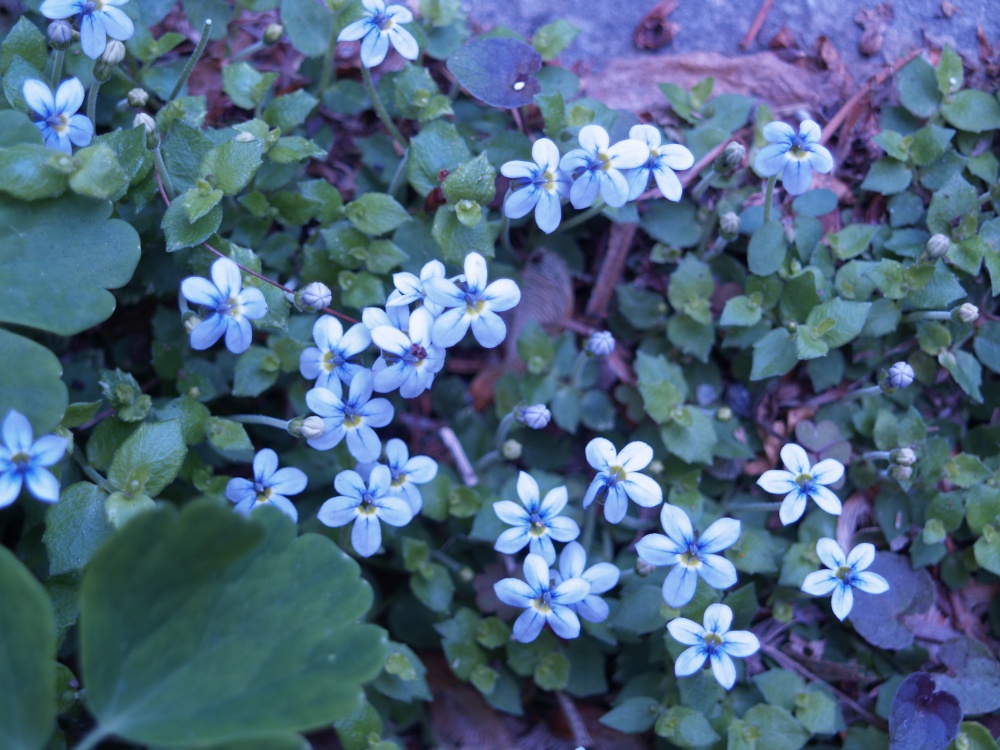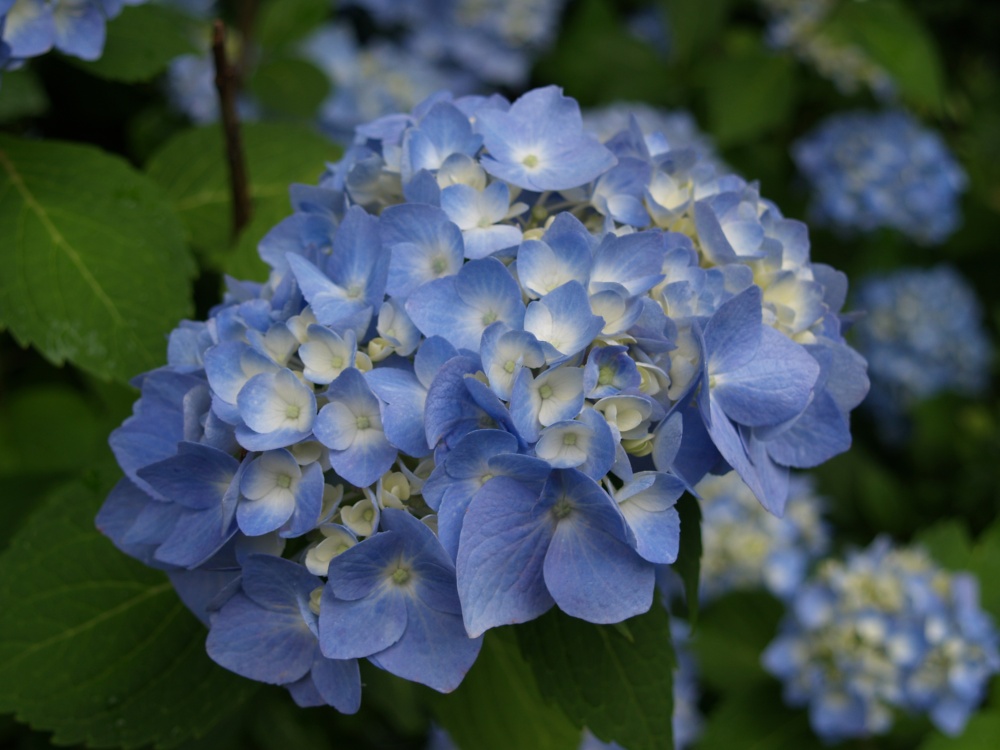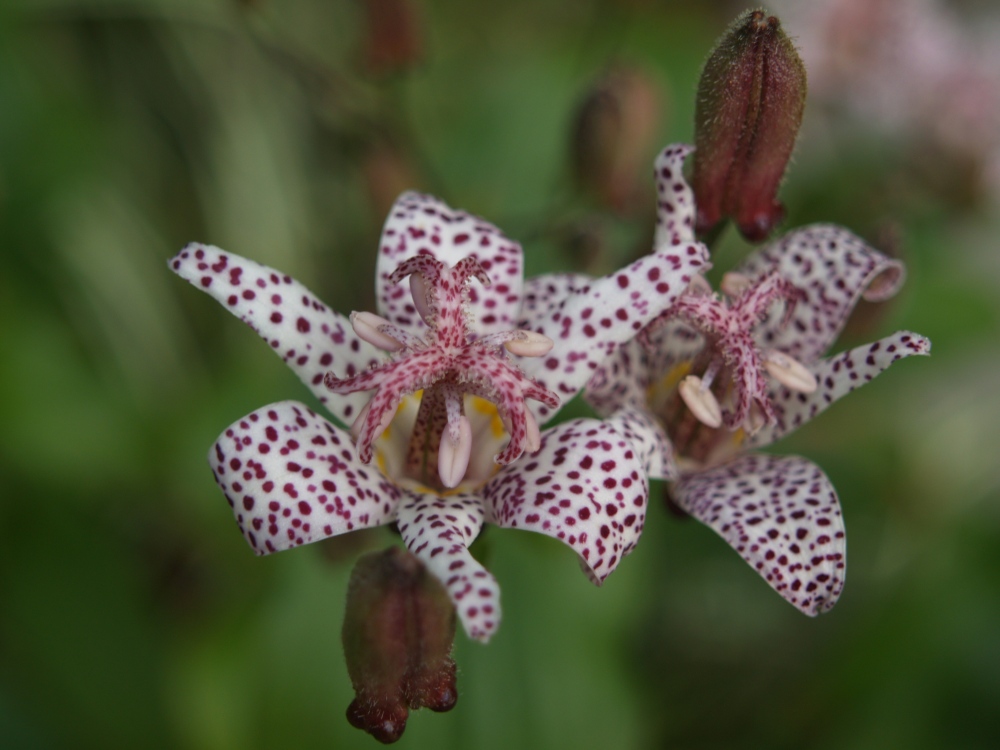It snuck up on me while I wasn’t paying attention.
Well, that’s not quite true. I knew what would happen, but failed to do anything about it. After years of neglect the lawn is a wreck and something must be done, particularly with the partially shaded front that is pockmarked by bare soil. In this wretched summer the bare spots have expanded, and weeds of every sort have invaded in numbers.
I know how to repair the damage, and how to prevent it, but I’ve been unwilling to water, so further labor and expense seem a poor investment. I am more conscientious in keeping up with the garden, and except for a few hostas that have suffered too much sun for too long, most of the garden is in fine condition. So, I’m leaning to digging up the small patches of grass that remain in the worst areas, and turning them to garden.
Beneath the large purple leafed beech the thirsty roots and shade have turned an area of a few hundred square feet to dust, with only a few stray sprigs of grass surviving. The project to turn this area to a garden bed should be quite simple.
First, the remaining grass will be removed, which will take no more than fifteen minutes, or perhaps double that if the day is warm. A stone path that winds through the garden must be extended through the new bed, so a bit of soil must be excavated so that the path does not block drainage. The excavation will be used to raise the planting area slightly, but the soil is average, not poor, and certainly not the reason that the lawn failed, so there should be no reason to add truckloads of compost. The area is quite flat, so I must be careful not to raise the bed area so that it disturbs surface drainage.
The extension of the path will be laid directly on soil with a bit of loose dirt beneath to stabilize the stones. The path is not used much, and I wouldn’t bother with it except that my wife insists on paths rather than walking on wood chips or soil. The stones will be slightly visible from the street, so I’ll make an effort to lay a proper path rather than the random stepping stones from other parts of the garden that stop and start, then disappear under a grouping of hostas, then reappear after several paces. The natural stone is quite irregular in shape, but the pieces will be fitted and chiseled so that an inch or two is left between to be filled by moss, thyme, blue star (above), or some other such low growing creeper.
The grass in this area has been sparse for so long that any meager planting will be a luxury, but the light shade is perfectly suited to hydrangeas (above, which will tolerate the shallow roots of the beech), and beyond the reach of the roots several reblooming Encore azaleas (below, with flowers in late April and September) will be splendid.
The planting will be oriented to be seen from the street as a skirt under the large beech, with all but the start of the stone path hidden by the taller shrubs. As you begin to travel the path the taller hydrangea and azaleas will taper down to toad lilies (below) and small leafed hostas, and perhaps a few brightly colored coral bells where there is a spot of sun.
Beyond the transport of materials, the construction of the stone path and the planting will require most of a day (a few hours longer if my wife should decide to help), and with twenty bags or so of bark nuggets the project will be completed. And there it is, twenty years of neglect turned to a fine garden, and in only a day of labor.
The new garden will be well suited to the shade and shallow roots, and will survive the heat of summer without a sweat. The bother of mowing and occasionally fertilizing the sparse grass will be eliminated, and the dust will be quickly forgotten. In the next week or two I will schedule a truck for delivery of the stone and plants, and of course the temperatures will be cooler by that date, so it seems now that the plan is sufficiently organized to present to my wife for approval.
Wish me luck!